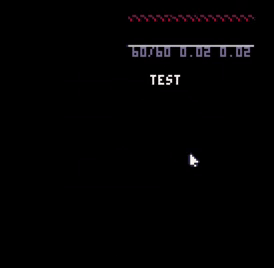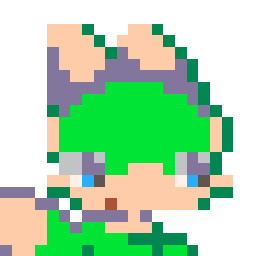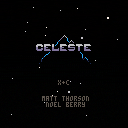Controls
cursor / dpad - move the reticle around the play area
z / O - press to rotate triangles anti-clockwise
x / X - press to rotate triangles clockwise
After the game has ended, press any button to try again
About
This entry is a demake of "bit Generations: Dialhex", which was released for the Gameboy Advance in 2006. You play in a hexagonal grid made up of triangles and the goal of the game is to keep the grid clear by rotating triangles within your reticle, to form hexagons of the same colour.
This is my first entry into the #pico1k 2024 jam, which allows 1024 bytes of compressed code and no assets (graphics/sound)
Group words that share a common thread.
Four words per category, four categories per game.
A demake of the New York Times Connections puzzle word game.
Because of Pico 8's cartridge size limitations, I was only able to include puzzles from July 1-September 7.
Known bugs:
- Statistics/scoring is not working.
- SFX is a mess.
- Some puzzles have font in small caps, and others are regular. Thoughts on the font choice? Which one do you like better?





Wanted to make a small game with some of the tutorials I've been going through for Pico 8. Right now, my idea is to create a basketball game by controlling the ball directly. The controls are both directions and the X button to "Dunk" which right now means to increase speed. I still need to implement detecting dunks and tracking score. so the game is really bare bones now. Will be looking to update in the weeks ahead. Feel free to look at the code so far to see what I could improve on to hopefully make a good game. Thank you!


"Smash By Bits Up"
Made for a 512 byte compo at Inercia demoparty (2023)
srand()r=0::f::o={}r+=1if(r>5)stop"⁶c"
t=0g=0h=-9n=0a=1l=cos for f=1,500do g,d=rnd(),g/2-.25s={sin(d),f/25,l(d),sin(d/2)+.3,f/25,l(d/2)*1.5,f/125-3,f/30,f/500,f/125-3,f/30,.5,sin(d)*2-1,f/25,l(d)}i=r*3-2add(o,{f=s[i],o=s[i+1],d=s[i+2],g=3+f/200+r*2})end::i::?"⁶1⁶c1"
circfill(64,550,500,0)t+=.01g,d=rnd(),g*2-1for f in all(o)do e,c,i=f.e,f.f,f.t if f.h then f.e+=f.c f.t+=f.r if(f.f+f.i>0)f.f=min(f.f)f.i*=-.4f.c*=.9f.r*=.7
f.f+=f.i f.i+=.01else e=f.d*l(f.o+t)c=f.f i=f.d*sin(f.o+t)c+=h if(h+n>-1and(e+g*3)^2+(c+r)^2+i^2<a^2)f.h=1f.e,f.f,f.t=e,c,i f.i,f.c=n*.7,e/15f.r=i/15
end e+=t*4-5i+=9-t*4circfill(64+e*64/i,54+(-c+2)*64/i,2/i,1)circfill(64+e*64/i,54+(c+2)*64/i,2/i,f.g)end if(h+n>-1)n*=-.8a*=1.7
n+=.02h+=n if(t>1)deli(o,rnd(#o))deli(o,rnd(#o))deli(o,rnd(#o))deli(o,rnd(#o))deli(o,rnd(#o))deli(o,rnd(#o))
if(t>2)goto f
goto i
|
Hi all,
Has anyone had much experience with calling sfx() with the note offset arg? For me it's very hit and miss. Basically some sfx change pitch, and perhaps other elements, when note offset is set to 1 or 2 but it does not seem to be note for note, and if I try to input a value higher than 2 or 3 I just get silence.
Testing on Picotron 0.1.1b on Ubuntu.
Not sure if this is a bug or not but it does not seem to be working as intended I think.
Any thoughts?

So, the goal of the cartridge is to give celeste veteran's a challenge right?
Well, take that idea, CRANK it up to 100, & make it have a baby with the hardest game on earth.
I only have Level 1 & part of level 2 hacked (The rest is just celeste) so, yeah! have fun!
Also I should give credit to @noel.
This is my attempt to simplify the dual-grid concept for pico8, and come up with a reduce tile set that works with map to make level design and edits easy and fast.
Inspired by the video https://www.youtube.com/watch?v=jEWFSv3ivTg by Jess::codes. check it out for a great breakdown of the dual-grid concept.
The full tile set needs 16 tiles (14 edges, 2 solid). I figured that by rearranging them into a single row in the sprite sheet I could use a single offset number instead of a lookup table.
since only 4 bits are needed for an offset of 16 and in the dual-grid 4 corners are checked, using the corresponding binary number to determine placement order. 0000 for base and 1111 top. check out the following image for placement.



Hey there!
So I've been working with some people on translating a game of mine into a couple of different languages. I can't seem to figure out how to change the default PICO-8 pause menu text into the desired translated text though. As far as I understand, you can clear the menu and add your own items, but I don't really want the translations to have reduced menu features from the original. Is there a way that I missed to actually replace default menu item text? Or some fairly low-token alternate solution? I realize that I'll probably have to settle with some amount of English in the menus so any ideas are welcome.
Thanks! ^^



I made this demo to quickly demonstrate how to use Blade3D, a 3D rendering API I'm working on. It doesn't make full use of the API, but it does give you a starting point if you want to make your own projects using (this version of) Blade3D. Hopefully I can make a slightly more comprehensive introduction to the API with full documentation in the near future, but for anyone willing to look at the underlying code, it should be pretty easy to accomplish whatever you need with just this template.
Something that isn't included in the template is a .obj to .ptm converter, which is provided here. It expects the .obj to include material references (not the .mtl file itself) and for the mesh to be triangulated.




Hello!
Since 0.2.6b, a strange issue appears when enabling the mouse with flags 0x5 on mac (mouse capture enabled).
The cart starts fine, but the more the mouse is used, the more the cart stutters until it's basically unusable.
What's funny is that the performance monitor (ctrl+P) shows weird stuff but does not seem to actually register drops to 30fps or less (at least the 60/60 string never changes).

(for a more complete video in 60 fps, see here : https://www.youtube.com/watch?v=jBTMadG90Oc)
It may not much seem like much, but it renders my current game project completely unplayable on mac.
I've managed to get a constant reproduction and made a test cart. I've confirmed that it only appears on mac, in pico-8 or exported as a mac binary. The issue does not appear on an html export on mac. I've also tested it on 0.2.5g, and it did not appear, so it seems to have been introduced in 0.2.6.
I've uploaded the test cart in this message. To reproduce the bug :
- download the cart (don't run it in bbs, it does not reproduce the bug)
- run it on mac
- activate the performance monitor (ctrl+p)
- move the mouse around for 30 seconds
- observe the bug








 11 comments
11 comments


































